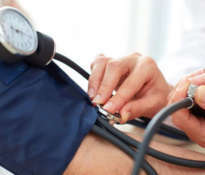According to common knowledge, factors that may promote heart disease include diabetes, overweight and obesity, poor diet, lack of physical activity and excessive alcohol consumption. Under the influence of these factors may result in heart failure, heart attack or arrhythmia. How to effectively prevent heart disease?
Regularly check the omega-3 level, because these fatty acids lower blood triglyceride levels, normalize blood pressure, anticoagulant and inhibit the development of ischemic and coronary heart disease.
The level of omega 3 fatty acids DHA and EPA can be assessed on the basis of a simple blood test. Laboratory analysis allows you to determine the percentage of EPA and DHA in the blood that directly reflects the risk of heart disease. A study conducted on a group of 500 women aged from 40 to 60 years showed that more than half of the respondents had too low omega 3. Specialists believe that the positive value of this indicator is at least 8%, while the average score for the whole group was only 5 %.
This confirms the conclusions of specialists who claim that it is necessary to increase the intake of essential fatty acids in the diet or use dietary supplements to supplement the deficiencies. It is important to preventively increase the consumption of omega 3, because heart diseases, although they are very dangerous and may even end in death, do not give the earlier symptoms and are often diagnosed only when they are already very advanced.
Statistics show that women are more vulnerable to heart disease or stroke.
How to top up omega fatty acids?
The best sources of essential unsaturated fatty acids EPA and DHA are sea fish (sprats, tuna, mackerel, salmon, sardines, cod, herring) as well as caviar and seafood. You can also take advantage of dietary supplements. For example, OMEGA+++, in addition to omega acids, also contains coenzyme Q10, which is essential for the continuous production of energy in the heart cells, and vitamin K2 – essential for maintaining cardiovascular health by preventing calcium deposition in blood vessels and helping to redistribute to bones where it’s needed.










